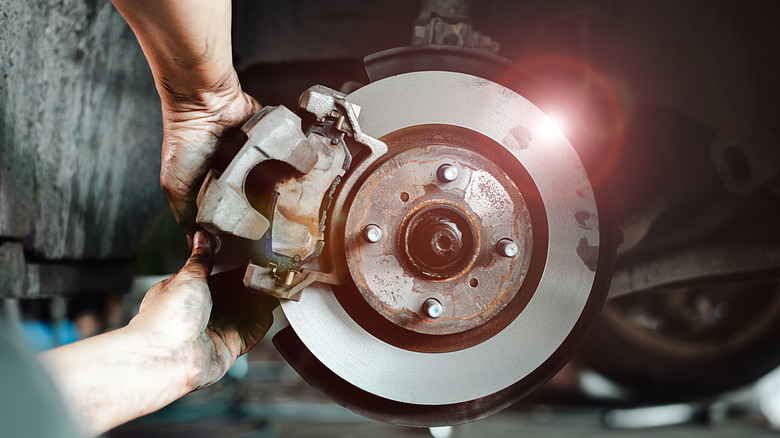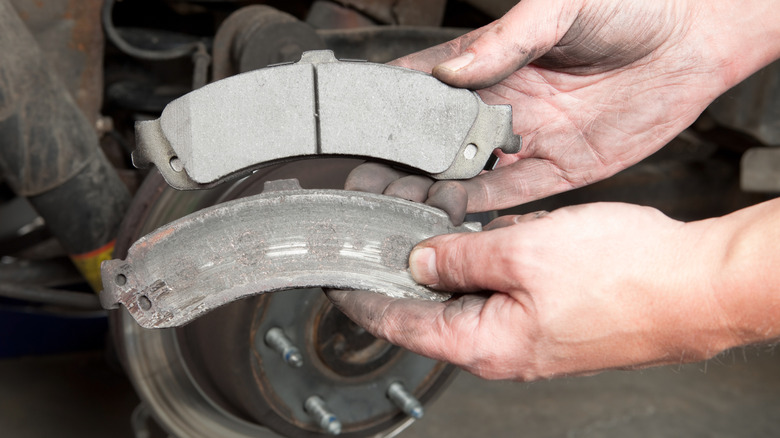How To Properly Get Rid Of Old Brake Pads And Rotors
Handling worn-out brake pads and rotors isn't exactly the flashiest part of car maintenance, yet it's an important one. Tossing them in the trash might seem convenient, but it's not a great idea. Not only can it harm the environment, but it might also mean you're missing out on some extra cash.
Take brake rotors, for example. A standard front disc rotor on a full-size sedan usually measures about 12 inches across and weighs close to 21 pounds since it is made of solid metal. In landfills, these rotors can sit around for many years, and when they do start to break down, they leave behind tiny particles. Brake pads aren't as large and are not 100% metal, but they present similar disposal problems. Materials such as copper in some pads are toxic to aquatic life and can pollute waterways as the pads wear down. So, from an environmental standpoint, dumping them with your regular garbage is a definite no-go.
There's also a money angle here. Rotors are an excellent source of scrap metal, and recycling centers often pay for them. While prices vary, you might get around $0.07 per pound. Considering the weight of rotors, that adds up, especially if you're changing out a full set, which, by the way, happens more often than you might think — most rotors need replacing every 50,000 to 70,000 miles, while brake pads usually wear out around 40,000 miles, depending on how and where you drive.
The right way to say goodbye to pads and rotors
Recycling is the best route for rotors. They're treated much like other scrap metal. But don't toss them in your household recycling bin — they're too heavy and can mess up the recycler's sorting machinery. Instead, take them to a dedicated metal recycling facility. Be sure to prep them beforehand: clean off any grease, avoid using harsh chemicals, and remove non-metal parts like backing plates. If you're working on several vehicles and you've got a lot of them, larger recycling centers can handle bulk drop-offs.
Pads are a little trickier. If you're having your brakes replaced at a shop, the staff there will usually take care of disposal. But if you're doing it yourself, you need to know what your pads are made of. Most pads made after the '90s are asbestos-free and can be dropped off at metal recycling bins or centers. But if they are older and contain asbestos, they should be handled as hazardous waste. Regulations where you live may require you to bring asbestos-containing materials to a toxic waste site, so it's smart to check in with your municipal waste management department. While you're at it, look for low-copper or copper-free brake pads when buying new ones to help reduce the environmental impact.
Repurposing your old rotors and pads can be even more sustainable than recycling, since you're extending their life and avoiding the energy cost of melting them down. Consider some unexpected uses for old car parts. Rotors, with their solid build and unique shape, for example, can make surprisingly good DIY material. They can be mounted on a wall as rustic sconces, turned into a heavy-duty base for a lamp, or painted and stacked into industrial-style flower planters.

